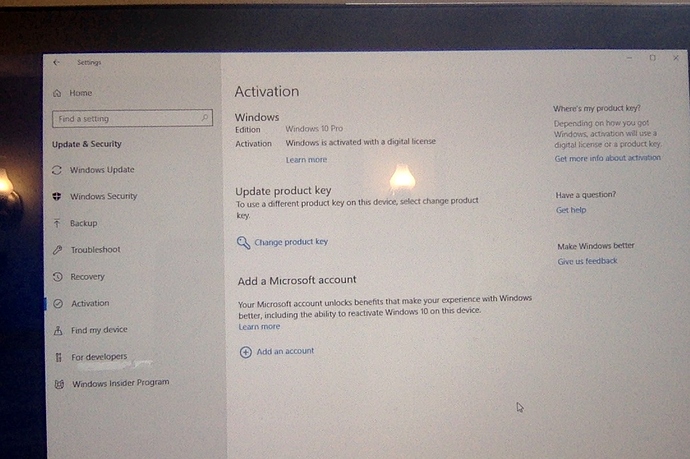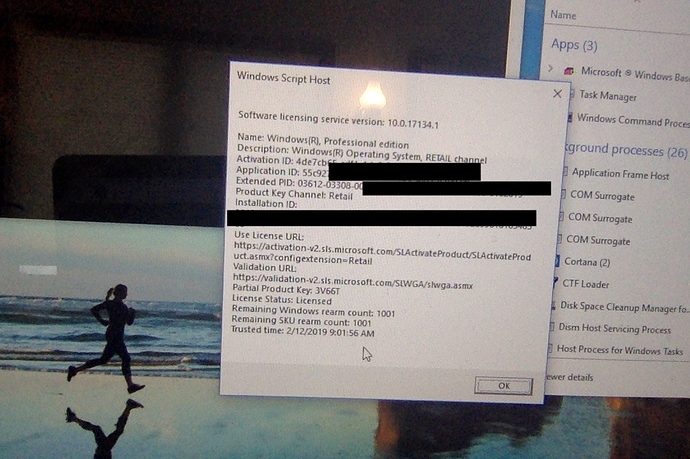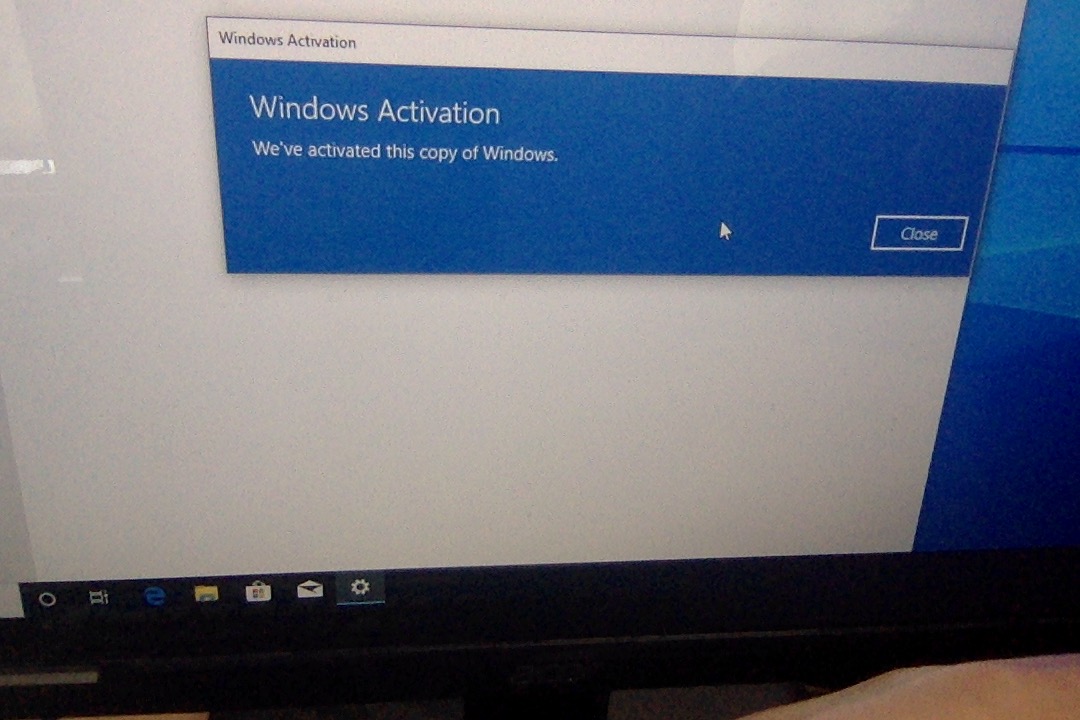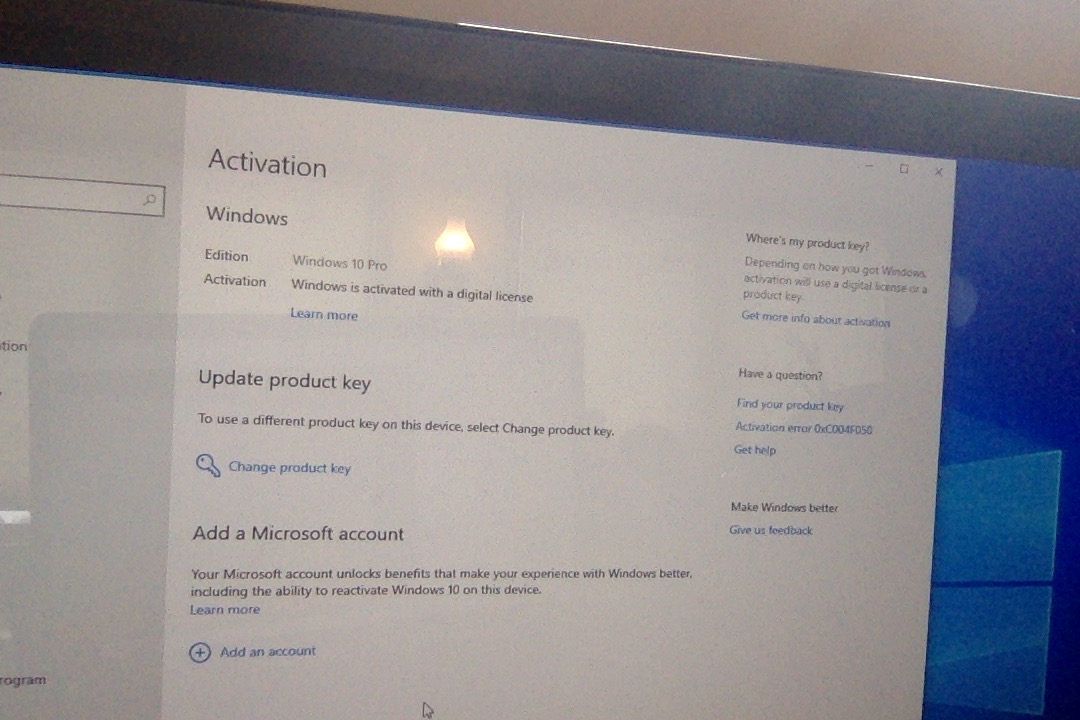Well, they did make Windows 10 for IoT.
I have a feeling they knew the market before they ever released IoT. But it did make some people feel like they care slightly about the community and was probably the win they wanted.
I think that any of us would be fine with activating Windows anyway. Nobody has tested a licensed version yet to the best of my knowledge.
I am trying to refute a person who is quite, to be honest, biased against the project.
https://www.raspberrypi.org/forums/viewtopic.php?f=62&t=233447&p=1428686#p1428686
Anything else I can perhaps offer?
It’s certainly a grey area still at this time and it may not be a good project for everyone. Who knows? Could be like Hackintosh where all support is community driven or they could fully embrace it - either way I’m sure Microsoft will sell a few more licenses due to this as nobody is trying to pirate software (I hope).
Maybe I’ll do some activation testing in the AM although I’m surprised no one else has tried yet.
Okay, I installed it, and WHAT THE HECK? Literally, right after installation! How is that possible? (This did happen directly after plugging in the Ethernet, but I did not use a MS Account during the install.)
Update: Maybe MS added source to OneCore which disables activation on Raspberry Pi so as to support Windows 10 IoT. Just a theory.
Well, apparently, it is a licensed version. It activated all by itself. I bet this is some Windows IoT Core exemption…
I can just see it now.
IF (("PROCESSOR_ARCH_NAME" == "BCM2836") OR ("PROCESSOR_ARCH_NAME" == "BCM2837")) {
$windowsActivated = true;I dont think it uses PHP Variables! /s
Ok, but thats very plausable.
Notice the license key is 3V66T. This is the generic Windows 10 Pro product key, VK7JG-NPHTM-C97JM-9MPGT-3V66T. Curious…
We have seen this with “Multiple Edition” ISO’s in the past where online activation fails until you give it a real key.
It takes MSDN W10 Pro keys without a problem although I haven’t had time to get it online or test full activation yet.
Hey there we go :). I’m going to side on the IoT core exemption coming into play here however anything outside of testing should probably still use a full license since this is full Windows and not IoT or otherwise not covered under the IoT core license agreement.
Probably. Interestingly, it does not activate until the internet is connected. Once I plug in the internet though, it self-activates. Which means that it might not be a platform-side exemption. I rather bet that it is telling Microsoft’s servers, “I’m running on a BCM2837 with the generic license key!” Microsoft servers then respond, “You’re on IoT Core, so you’re activated!”
However, there is one problem with this theory. Windows activation also sends the version of Windows you are running (e.g. IoT Core, Windows 10 Pro, Windows 10 for Workstations, etc.) Why MS servers are giving free pass to any version of Windows doesn’t quite line up.
Unless, of course, someone in Microsoft was experimenting with Windows 10 on a Pi before us. Maybe…
Interesting indeed… The only thing I can think of is that maybe their activation logic for IoT simply does not care about the reported version. MS engineers probably never intended on variation like this but they also partner with Qualcomm being a primary focus. It’s possible they will fix it eventually - they are aware now with your activation record at least.
Or not. I’m sure MS isn’t paying attention to every single activation.
Still, shout out to Microsoft: If you could leave it this way, that would be good! Better yet, if you could make Windows 10 run officially on the Pi, that would be great!
I activated Windows on mine with a MSDN key. Depending on how the UUID is constructed, this might have caused everybody to get activated…
Can you run wmic path win32_computersystemproduct get uuid in the command prompt and check what UUID is returned? Mine is 33695052-0000-0000-0000-000000000000 - if everybody gets this UUID, this would be why Windows is activating.
I ran it…
33695052-0000-0000-0000-000000000000
Which is exactly the same…
The Rearm count is 1001. And besides, MS wouldn’t allow more than a few Pis to be activated at once. If it really was just the UUID, how come nobody has come along and made a UUID changing tool for Windows?
My extended PID and activation IDs are very long and quite random looking. [My point is, it can’t be just a UUID. That’s too easy!]
Try slmgr.vbs /dlv in the command prompt. We can see if our IDs match.
BIOS UUID is one of the main things activation looks at (not the only thing - network card MAC is also checked, although I wouldn’t be surprised if that’s ignored for USB NICs).
Compared with your picture from above, my application ID and extended PID are the same, but activation ID is different. Note that I activated Windows 10 Pro N, however automatic activation doesn’t care about that (if you had regular Pro activated on a system, Pro N will activate if you install it without a key).
Weird…
But at the same time, this seems really… Windows Activation can’t be this easily fooled, especially not by accident. It’s too easy.
Somebody else just auto-activated. Build 17663.



